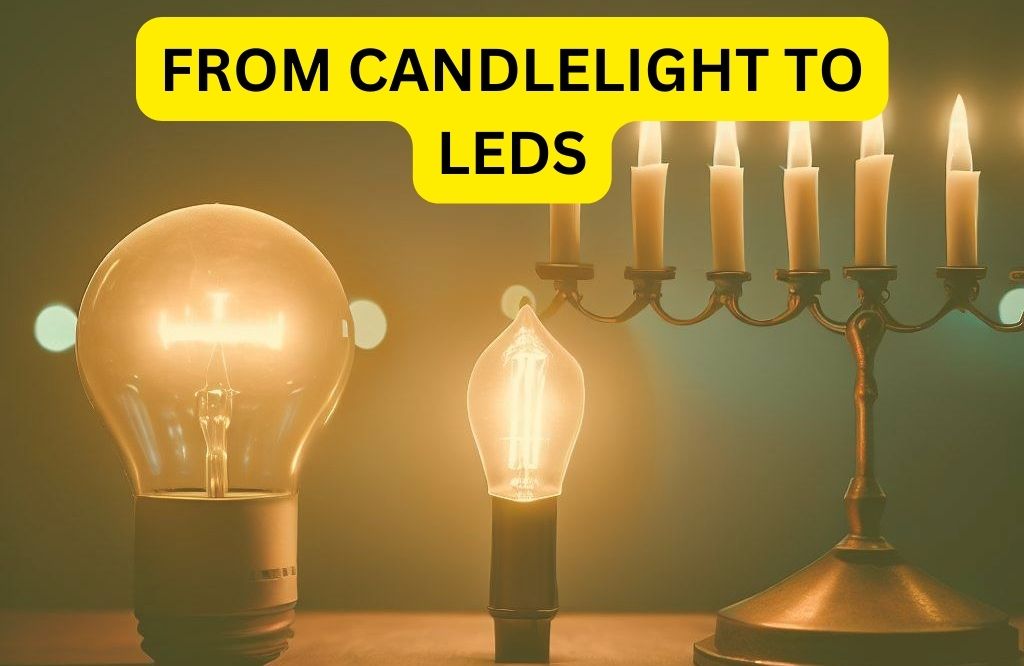In the history of human progress, the evolution of home lighting stands as a glowing testament to our inventive spirit. Our journey from the primitive use of fire to the sleek sophistication of LED bulbs illustrates not only technological advancement but also our evolving needs and values. Understanding this progression provides valuable insights into our past, present, and future living conditions.
The Early Days of Home Lighting
Use of Fire and Candles
The initial method of illuminating homes involved the use of fire, which not only provided light but also warmth. As time progressed, the advent of candles represented a substantial leap forward in home lighting. Made from various materials such as animal fat (tallow), beeswax, or plant-derived waxes, candles offered a solution that was both portable and controllable, reducing the hazards associated with open flames and improving the safety and convenience of lighting in homes. This innovation allowed for a more manageable and efficient source of light compared to the traditional use of fire.
The Introduction and Impact of Oil Lamps
Oil lamps, using plant oils or kerosene, further improved lighting quality and safety. They were cheaper, brighter, and more long-lasting than candles, revolutionizing home lighting in the 19th century.
The Birth of Electric Lighting
The Invention of the Light Bulb
Arguably, no development has had more of an impact on home lighting than the invention of the light bulb by pioneers like Thomas Edison and Joseph Swan. The electric light bulb was safer, brighter, and more reliable than any previous lighting source.
Impact on Society and Daily Life
Electric lighting drastically changed societal structures and lifestyles. It extended productive hours into the night, facilitated the rise of nighttime entertainment, and contributed to the growth of cities.
Varieties of Early Electric Bulbs
Incandescent bulbs, producing light by heating a filament inside the bulb, became a household staple. Later, halogen bulbs, a variant of incandescent bulbs, offered a brighter and more energy-efficient light.
The Fluorescent Era
Introduction of Fluorescent Bulbs
The mid-20th century saw the advent of fluorescent bulbs. They produced light by exciting a gas inside the tube, resulting in a glow. The Compact Fluorescent Lamp (CFL), a smaller version of the tube-like fluorescent bulb, became popular due to its energy efficiency and longer lifespan than incandescent bulbs.
Impact on Energy Consumption and Cost
Fluorescent bulbs consumed less energy and lasted longer than incandescent bulbs, significantly reducing energy bills and environmental impact. Despite their higher upfront cost, their energy efficiency and longevity made them an economically wise choice.
The LED Revolution
Development and Rise of LED Bulbs
LED (Light Emitting Diode) bulbs, invented in the 1960s, have become dominant in the 21st century due to their extreme energy efficiency, long lifespan, and decreasing cost. LEDs produce light by passing current through a semiconductor, eliminating the need for a filament.
Advantages of LED Lighting
LEDs are versatile, and available in various colors, brightness levels, and designs. They last far longer than their predecessors, and their efficiency has significant implications for energy consumption and carbon footprint reduction.
Smart LEDs and the Role of Technology in Lighting
Modern LED technology includes smart bulbs, which can be controlled remotely, programmed, or integrated into a smart home system. These advancements offer unprecedented control over home lighting, improving comfort, convenience, and security.
The Role of Dimmer Switches in Modern Home Lighting
How Dimmer Switches Have Evolved Along with Light Bulbs
As lighting technology has advanced, so has control technology. Dimmer switches, allowing us to adjust light levels, have also evolved, from early rheostat designs to modern digital dimmers compatible with CFLs and LEDs.
Benefits of Using Dimmer Switches with Modern Lighting Options
Dimmer switches help save energy and extend bulb life, especially when used with LEDs. They also enhance the flexibility of lighting, allowing us to adjust light levels to suit activities, mood, or time of day.
Selecting the Right Dimmer Switch for Different Light Bulbs
Not all dimmer switches are compatible with all bulb types. It’s important to choose a dimmer switch that is compatible with the bulb in use to prevent flickering, reduced bulb life, or even potential fire hazards.
The Future of Home Lighting
Emerging Trends
As we look ahead, innovations like Organic LEDs (OLEDs), Li-Fi (data transmission through light), and enhanced smart home integration promise to revolutionize home lighting. Efficiency, sustainability, and personalization are likely to be key themes in the future of home lighting.
Anticipated Impacts on Home Energy Consumption and Lifestyle
The future of home lighting is likely to continue to reduce energy consumption and provide more personalized lighting experiences. Lighting could become more integrated into our digital lives, playing a larger role in home security, energy management, and even data transmission.
Conclusion
The journey from candlelight to LED isn’t just a story of technological progress. It’s a reflection of our values and changing lifestyles. Understanding this evolution provides valuable insights into our energy consumption, environmental impact, and quality of life. It encourages us to imagine a future where lighting contributes even more significantly to our comfort, productivity, and wellbeing.

